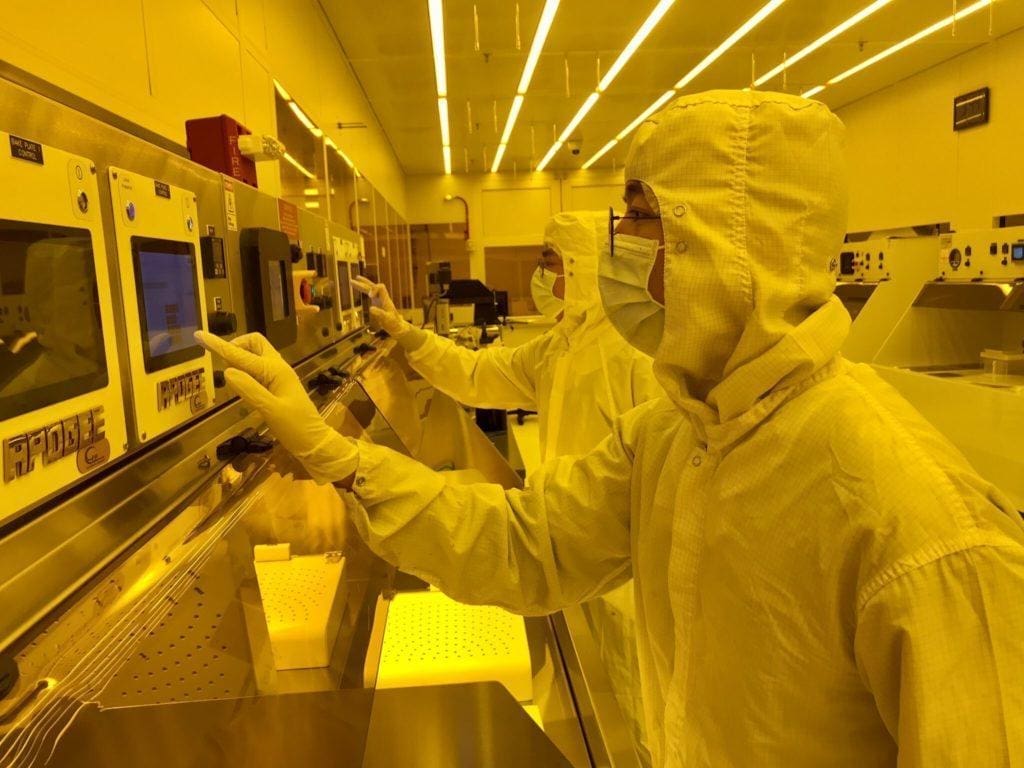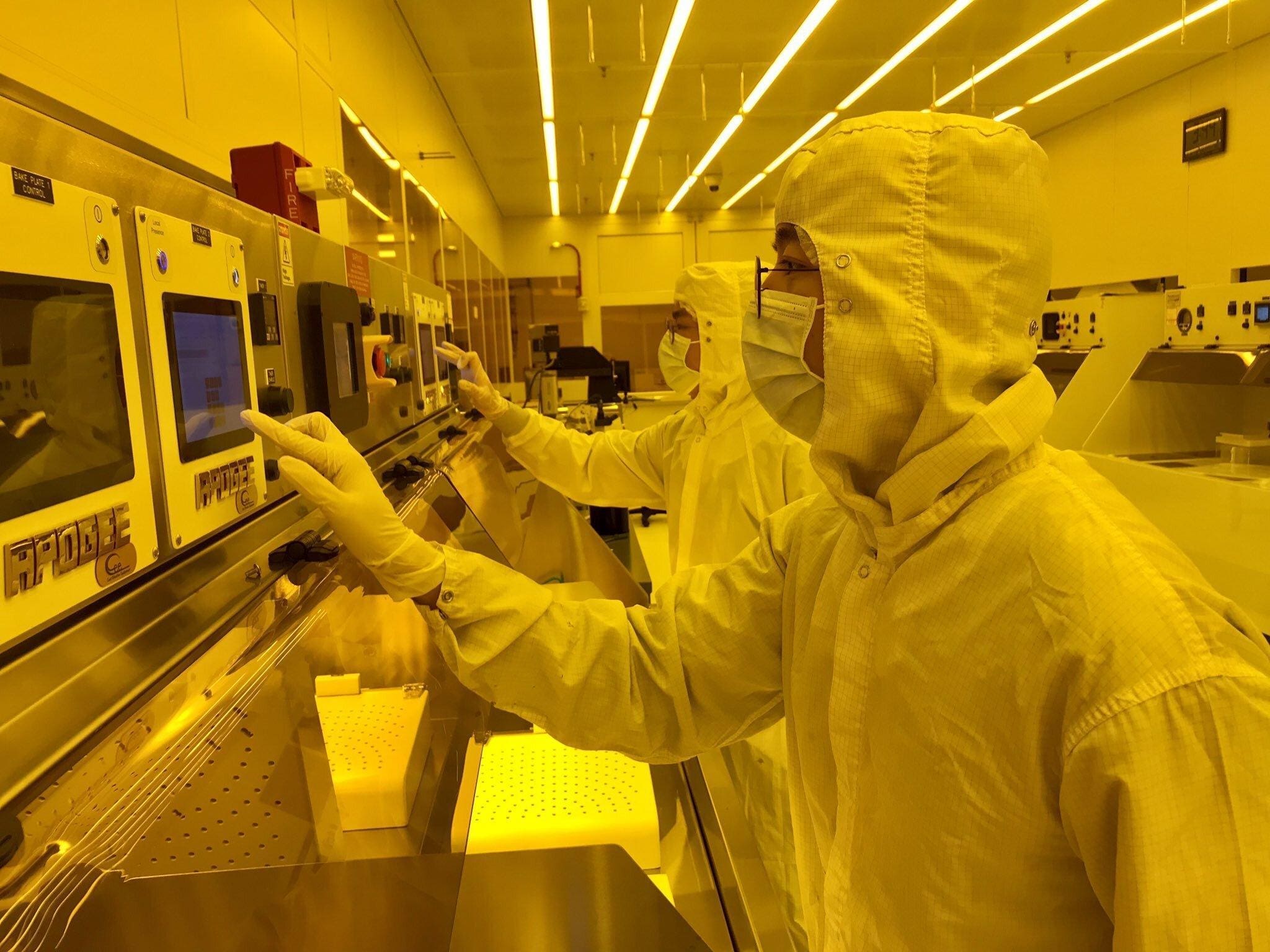The John O’Brien Nanofabrication Lab is a hub for research projects ranging from basic science to applied technology, including lithography, characterization, imaging, and device integration resources.

By Justin Chapman
 USC Professor Andrea Armani recently announced the opening of the John O’Brien Nanofabrication Laboratory in the USC Michelson Center for Convergent Bioscience (MCCB).
USC Professor Andrea Armani recently announced the opening of the John O’Brien Nanofabrication Laboratory in the USC Michelson Center for Convergent Bioscience (MCCB).
“This is an extremely exciting time,” said Armani, director of the Nanofabrication Lab and the Ray Irani Chair in Engineering and Material Sciences at USC Viterbi. “Getting this new nanofabrication facility up and running has been about a decade in the making. It’s truly a hub for innovation at USC across a lot of different fields. It’s one of the core flagship facilities for the USC campus and it’s located right in the Michelson building.”
The Nanofabrication Lab is an innovation hub for research projects ranging from basic science to applied technology, including lithography, characterization (surface, optical, electrical), imaging, and device integration resources. It will enable interdisciplinary research with next generation nanomaterials, which is unique among nanofabrication facilities and will allow researchers to translate novel materials into transformational devices for a wide range of applications. The lab is co-located with the Center for NanoImaging in MCCB.
As the only nanofabrication facility on the USC campus, it is used by 40 different research groups in many different biomedical disciplines, including biology, chemistry, physics, and several fields in engineering. The facility supports up to $95 million a year in research contracts and more than 100 student and postdoc researchers.

The facility represents a $55 million investment and was constructed in two phases. The first stage was the initial construction of the Michelson building, which was completed in November 2017. The second stage involved the design and construction of the cleanroom, including the installation of state-of-the-art instrumentation. That second phase was supported through multiple separate gifts, including donations, federal grants, contracts, and funding from USC.
“Getting this new nanofabrication facility up and running has been about a decade in the making. It’s truly a hub for innovation at USC across a lot of different fields.” –Professor Andrea Armani
Before the new facility opened, researchers used a previous nanofabrication lab built in 1992 in a different location known as the W.M. Keck Foundation Photonics Center Cleanroom, which was about one-third of the size of the new O’Brien lab.
The new facility was planned for MCCB as part of the original design of the building, which opened in 2017. At about 10,000 square feet, the lab takes up a third of the MCCB basement and meets stringent specifications related to the control of acoustics, cleanliness, electromagnetic interference (EMI), temperature stability, and environmental vibrations.
The lab technically opened to researchers in April, but the official opening was in August. While it recently passed the permitting, inspection, and approval process required by the city of Los Angeles’ Building and Safety Department, additional new equipment is still expected.

“It’s been a rolling opening,” said Armani, who has overseen the design and construction of the facility, including working with all of the contractors and architects from the initial vision through to the development phases. “Obviously a lot of users want to get in there as quickly as possible, so some of the users started going in in June, even when we only had four pieces of equipment turned on. Other users waited to go in until this week, when we had approximately 70% of the equipment online. When it’s safe to do so, we’re going to have the official ribbon-cutting ceremony to celebrate the opening.”
What is nanofabrication? “When you think about how you’re going to make an integrated circuit or an electronic circuit for a laptop or for a cell phone, the process you use to make that is called nanofabrication,” Armani explained. “It’s basically a machine shop for making little tiny nanoscale features. All equipment is in a clean environment. To go in, you put on a ‘bunny suit’ to keep dirt out, and you use very specialized pieces of equipment that are designed to drill nanoscale structures into silicon wafers or into glass substrates. Because you are making basic electronic or optical devices, they can be used in any application.”
Armani’s research focuses on integrated photonics and diagnostics for laser-based optics.
“We actually make our integrated optical circuits in the nanofab facility. An integrated optical circuit is like an electrical circuit, except instead of moving electrons around, we use photons. By watching how the photons interact with proteins or tissue, we can detect or monitor disease progression.”

Another researcher who uses the Nanofabrication Lab is Dr. Ellis Meng, a biomedical engineering professor who works on implantable neural electrodes to try to understand how the brain works and how to treat diseases such as Parkinson’s or Alzheimer’s. Meng runs an NIH Resource Center that develops transducer platforms for researchers across the United States. The Nanofab Lab will become a manufacturing center for making these neural implantable electrodes.
Quantum computing researchers will also use the nanofabrication facility. Assistant Professor of Physics and Astronomy Dr. Eli Levenson-Falk makes quantum computational chips based on studying magnetic spin particles. He will now fabricate those chips in the new nanofab facility.
“Dr. Meghan L. McCain’s research is very innovative,” Armani said. “She looks at how heart cells interact with the grooves in the sidewalls of veins. Her fabricated structures are basically mimics of the human body, and she can control it very precisely. It’s simple fabrication but her research can have a very big impact.”
In addition to the faculty researchers who will be using the facility, students from a number of different disciplines will have access to it as well. Armani said they are currently working on developing Nanofabrication Lab Fellowships, similar to a model used at other nanofabrication facilities, which secures funding for students to use to pursue exploratory projects.

In April, NASA’s Jet Propulsion Laboratory donated a scanning electron microscope (SEM) to MCCB’s Nanofabrication Lab.The SEM allows scientists to “image an object around one nanometer thick in structure which is similar to DNA,” according to Armani. “This magnification is not possible with a conventional optical microscope which relies on photons. The higher-energy electrons allow smaller features to be resolved. But this specific microscope has a special capability. It can also determine what elements are present in a material, making it a very powerful and useful tool.”
With the combination of the SEM and the facility’s recently acquired multi-million-dollar e-beam writer for patterning nano-structures, the John O’Brien Nanofabrication Laboratory is “now home to a complete suite of nano-imaging and nano-writing instrumentation,” according to a USC Viterbi article. “This capability will accelerate the research supported by the facility, allowing researchers to create devices that address many pressing health and environmental issues as well as push the limits of quantum technologies.” Learn more at nanofab.usc.edu.

